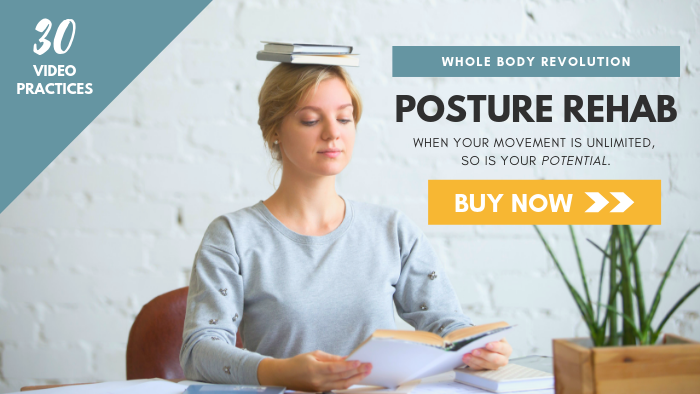Movement is absolutely essential to health. It stimulates your central nervous system, increases oxygen flow to the brain, improves circulation, and flushes fluids into and out of cells, among other benefits. In fact, the flexibility of your body is directly correlated to the flexibility of your mind; after all, the body is an expression of your mental state. As Mary Ann Foster states in her book, Somatic Patterning,
“Mental constructs and cultural conditioning create physical fixations that support and maintain rigid beliefs and ideas about who and what we really are.”
In short, if you want to change your life, move your body!
Studies have shown that increased circulation (resulting from movement) contributes to the health of the mitochondria of a cell. Mitochondria are the power-houses of the cellular world; it’s where all your energy is generated in the form of adenosine triphosphate (ATP). They are also active in other cellular processes, such as the control of the cell cycle and cell growth. They have been implicated as playing a role in the human aging process as well (hint: healthy mitochondria = healthy aging!).
Movement also enhances our sense of self and the space around us.
Physical movements are determined by proprioception – the perception of our bodies in space and gravity. There are tiny proprioceptors in the muscle cells of our bodies that gauge tension levels and make constant adjustments to keep us upright.
These mechanoreceptors are actually what determines the flexibility of a muscle, not the physical length of the fibers. When you stretch muscles, the proprioceptors initiate what’s called the “stretch reflex,” causing the muscle to contract once it reaches a certain length, preventing the fibers from tearing and injury. Consistently moving in new, innovative ways generates new neurological patterns through stimulation of the mind-body connection. A shift in self perception results in a change in movement patterns. The best way to shift perception is through playful, non- threatening activities that engage on both the mental and physical levels.
As far as your joints are concerned, motion is like adding oil to a creaking hinge. Repeated movement of the joint warms up the synovial fluid and lubricates the joint capsule. It also creates awareness at the level of your proprioceptors, so moving each joint fully and completely reduces muscle guarding, which translates into increased range of motion, reduced pain, and greater adaptability for your entire body. You will notice, as you begin to explore joint mobility, that your balance and coordination improve, and your reflexes may quicken.
So often, movement in our society is mechanical, industrial, and constrictive.
Rarely do we allow our bodies to truly open up and move in new and creative ways. We try to control the functions, measuring angles, range of motion in joints, and studying form to determine function. We look at a hinge joint, state how it “should” work, and then design exercise machines around this supposed function, specified to an “average” range of motion. We try to define proper function, try to dictate what’s normal for a body, and then we standardize exercises around these principles.
You have a map in your brain, called a Body Map, which determines your body’s potential for movement. Different areas of the body take up greater or lesser amounts of space on this map depending on how much sensory input the brain receives from any given area. The hands and feet, for example, take up a huge portion of your Body Map because so much information is received from them. This mapping system is plastic in nature; sensory input from manual therapy as well as movement serve to change and enlarge this map, giving you increased capacity for movement. The Body Map in your brain is not only limited to the space inside your body; it actually includes the space around you as well.
The potential within us is so great, and yet we imprison it with orderly, regimented movements. Emilie Conrad, founder of Continuum Movement Therapy, posits that the redundancy of our lives – endless repetition of tasks and activities with zero outlet for creativity – could be a contributing factor in neurological degenerative diseases such as Alzheimer’s due to the complete lack of neurological stimulation. Additionally, regimented movement creates compression, or muscle density, within the bodily tissues. Compression creates an environment of dissonance where fluid is not able to flow into and out of the cells; this kind of situation does not cause disease, but it creates a state in which disease can thrive.
For example, cells that do not have sufficient fluid flow to wash away waste products may become increasingly acidic, and cancer cells thrive in an acidic environment. Additionally, areas of the body experiencing extreme compression are functionally isolated from the whole organism, meaning the flow of movement in the body is blocked.
The surest way to create dis-ease – both mental and physical – is isolation.
With these thoughts in mind, it is imperative to our continued health and well-being to continually develop new ways of moving our bodies and stimulating our minds.
Want a little help figuring out how to get your shimmy-shake on? My Posture Rehab video course will give you step by step instructions for wiggling your way out of pain and restriction into a new, more flexible you.
